Frida Kahlo, a prominent figure in modern art, is celebrated for her deeply personal and emotive paintings and as a symbol of strength. Born in 1907 in Coyoacán, Mexico City, Kahlo’s life was marked by physical afflictions and passionate relationships that influenced her art.
She became globally recognized for her vivid self-portraits and depictions of Mexican culture and identity. Beyond her artworks, Kahlo has posthumously emerged as a feminist symbol and an LGBTQ+ icon. Her unique style and unapologetic and bold life have made her one of the world’s most recognizable faces on Earth.
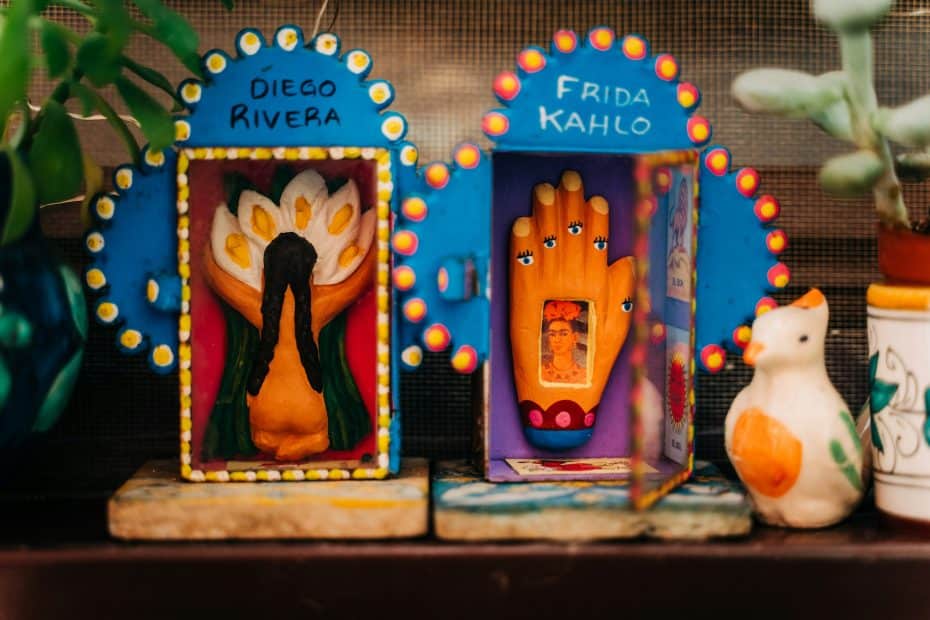
La Casa Azul is located in Frida’s leafy Coyoacán neighborhood at 247 Calle de Londres. This historic house-turned-museum was Frida Kahlo’s home and is now a tribute to her life and work. Initially built by Kahlo’s father in 1904, it became a hotspot of intellectual exchange among influential figures such as Leon Trotsky, André Breton, and Pablo Neruda when Frida lived there with her husband, Diego Rivera, from 1929 onward.
The museum houses an extensive collection of Kahlo’s personal belongings, artworks, photographs, and mementos, alongside pieces by Rivera. Visitors can explore the vibrant interior spaces where Kahlo lived and worked and the lush gardens that surround the property.
Frida and Diego: Icons of Art and Passion
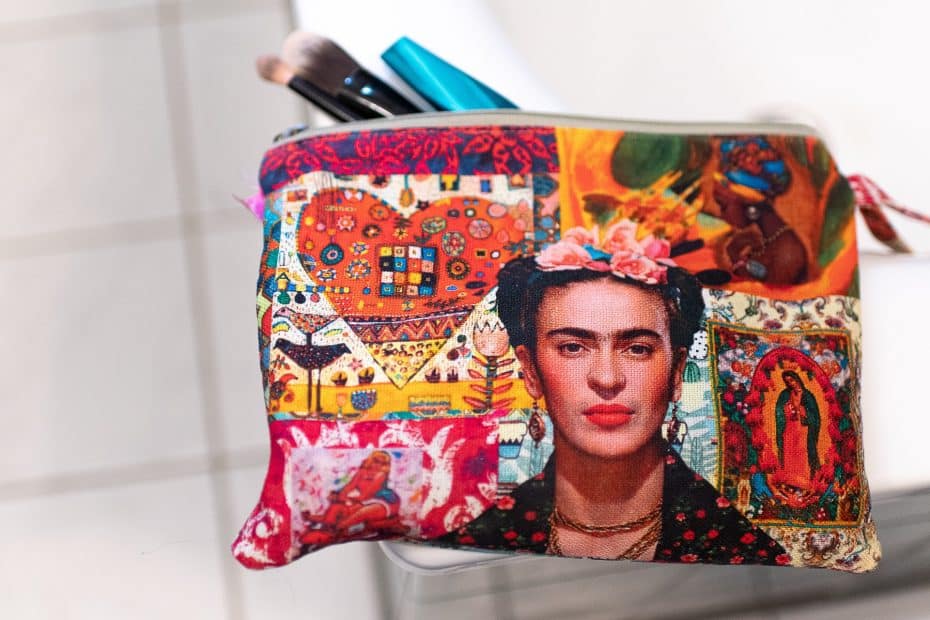
Frida Kahlo and Diego Rivera, two of Mexico’s most influential artists, shared a deep and tumultuous relationship both in their personal lives and artistic endeavors. Frida, renowned for her deeply personal and symbolic self-portraits, and Diego, celebrated for his grand murals, formed an iconic power couple who left an indelible mark on the art world.
While Diego achieved fame and recognition during his lifetime, Frida’s rise to international acclaim came posthumously. Funny how, these days, almost everyone recognizes Frida’s face, while Diego’s name might slip through the cracks. Known for her vivid and expressive paintings that delve into her pain and passion, Frida’s work resonates with many, making her an enduring symbol of strength and creativity and a powerful symbol for feminism and the LGBTQ+ community.
Today, La Casa Azul, their shared home, offers an intimate glimpse into their world and allows us to explore the spaces where they lived, loved, and created.
Museo La Casa Azul: The Building
La Casa Azul, also known as the Blue House, is located in Coyoacán, a vibrant borough in Mexico City. This building is easily recognizable by its bright cobalt-blue walls, which have become iconic. The house was originally built in 1904 and retains a traditional Mexican architectural style, including a central courtyard, thick walls, and a flat roof. Moreover, Ornamental details, such as colorful tiles and large wooden doors, balance the structure’s simplicity.
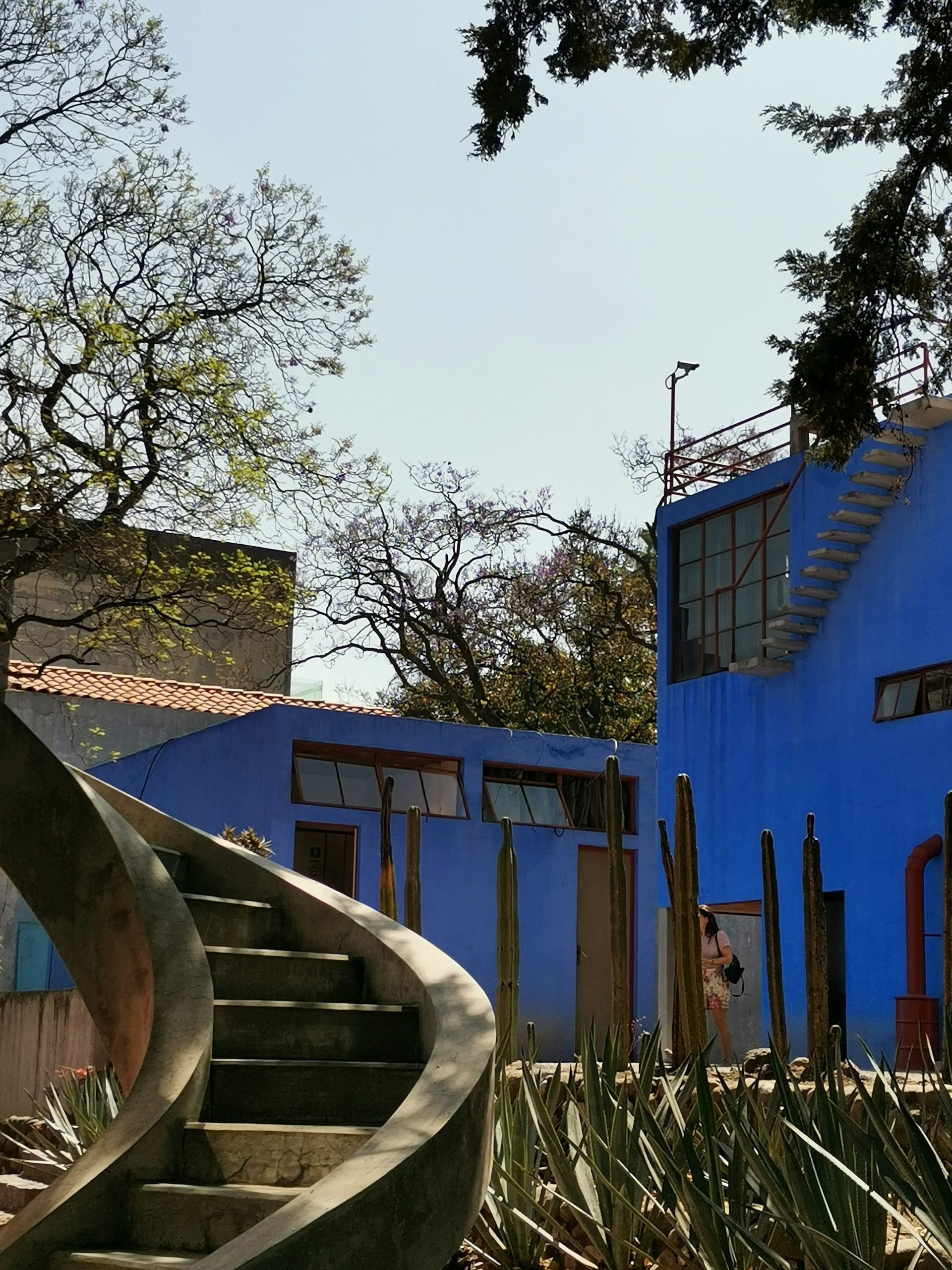
The interior of La Casa Azul showcases high ceilings and spacious rooms. Each room opens to the central courtyard, the home’s heart. Inside, brightly painted walls are adorned with local art and handcrafted furniture. Additionally, natural light streams through large windows, creating a warm, inviting atmosphere.
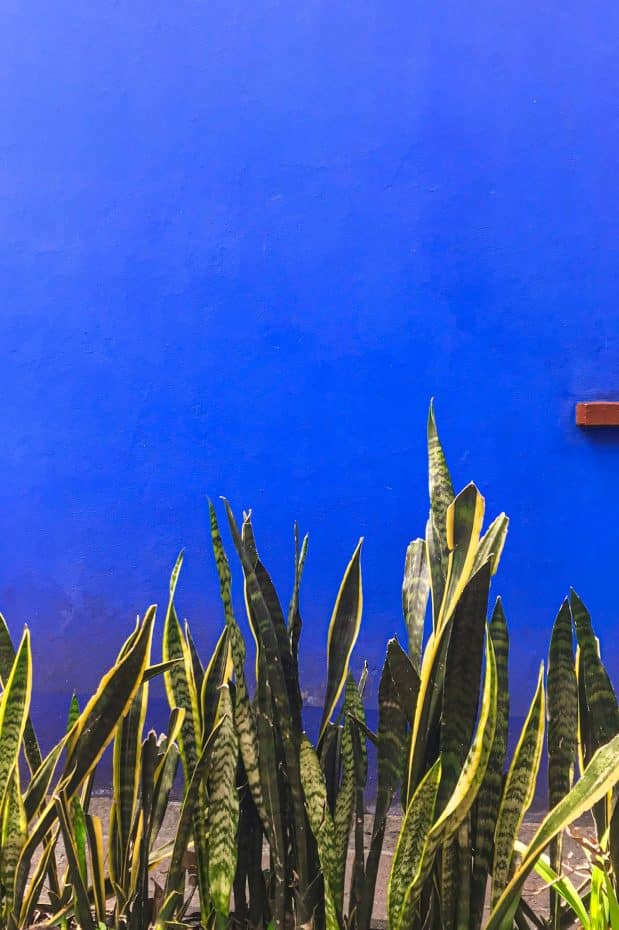
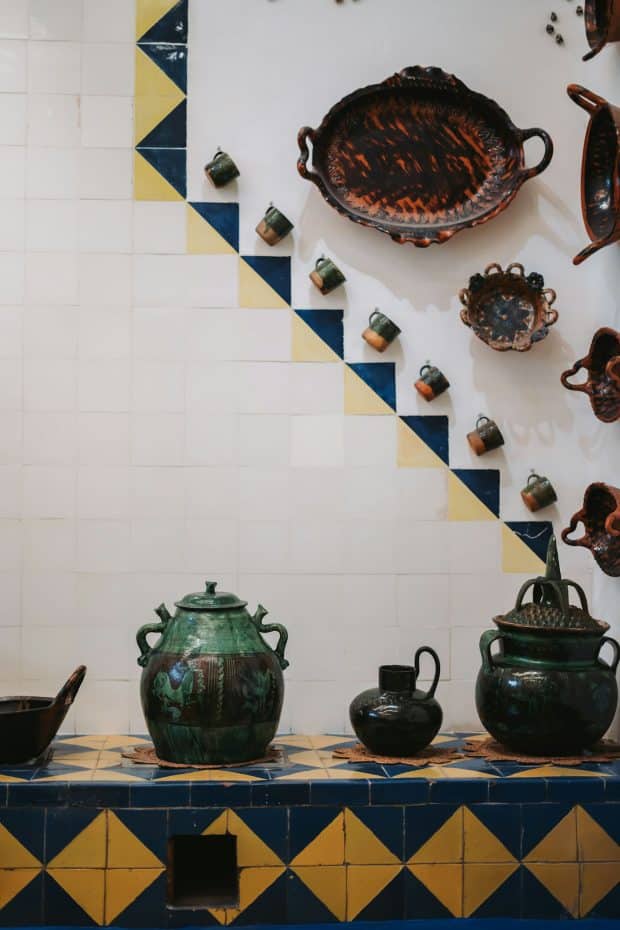
The outdoor space of La Casa Azul features a lush garden filled with native plants and flowers. This garden is surrounded by a high stone wall. Amongst the greenery are paths made from local volcanic rock, which guide you through various plants such as cacti and azaleas. The garden complements the house’s living spaces by extending them into tranquil outdoor areas to watch the time go by.
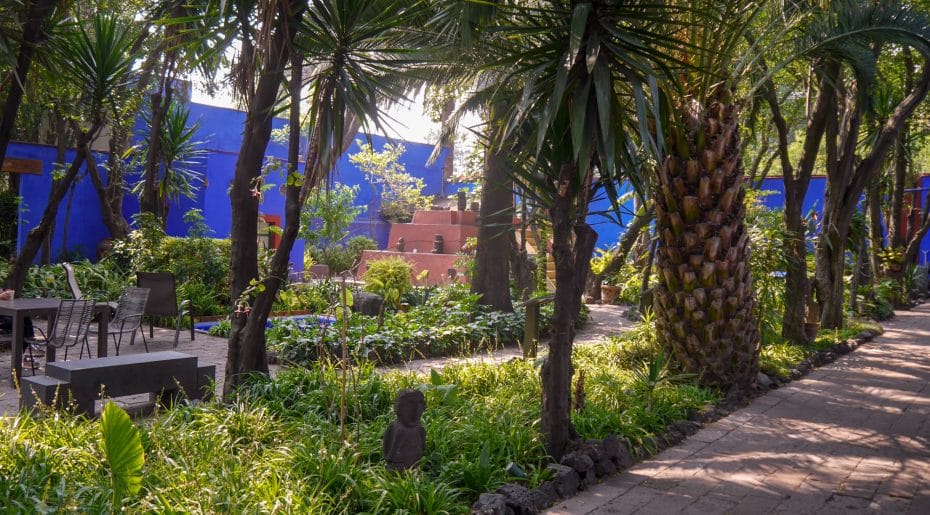
La Casa Azul Museum: The Collection
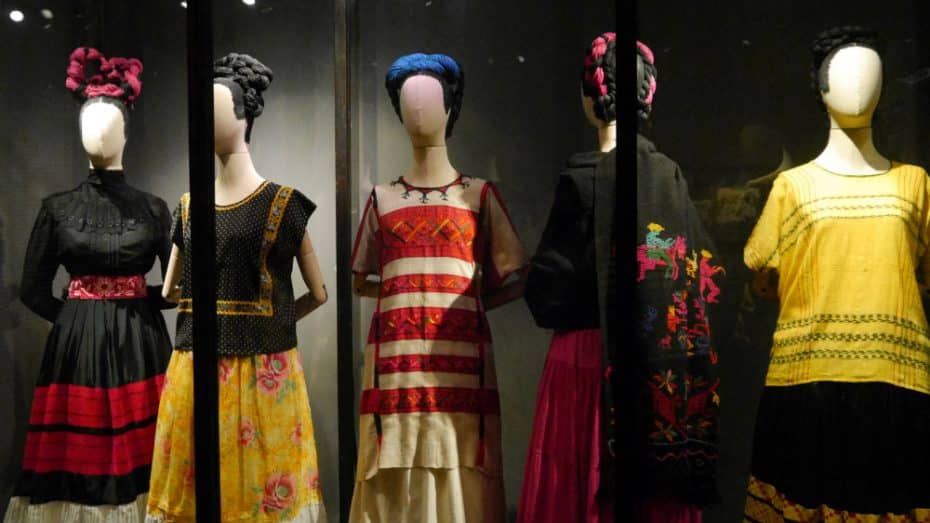
At Casa Azul, you will find a fascinating collection of artworks by both Frida Kahlo and Diego Rivera. Some noteworthy pieces include Kahlo’s self-portraits like “Viva la Vida” and Rivera’s sketches for his vibrant murals.
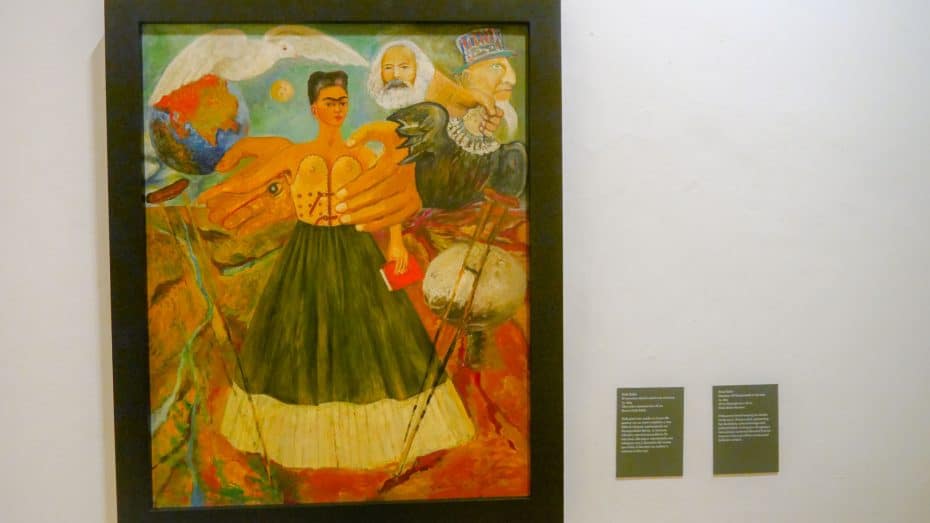
The house is filled with paintings, sculptures, and artifacts that showcase their distinct artistic styles. Kahlo’s vivid colors and personal themes contrast with Rivera’s grand historical scenes, yet they complement each other perfectly throughout the space. Much of their work reflects their personal lives and deep connections to Mexican culture.
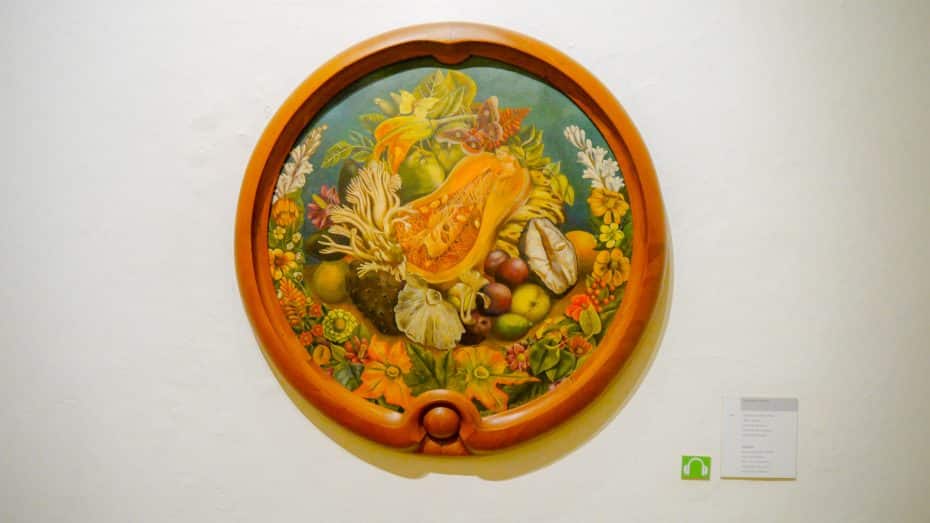
Exploring Casa Azul is like walking through the chapters of Frida’s life. Each room has its own story, showing how she lived and worked. You start in rooms filled with creativity, then move to more personal spaces that highlight her unique history. Because it’s a house museum and many of the original furniture and day-to-day items are intact, it’s impossible to walk around La Casa Azul without imagining Frida on every corner. The domesticity that lies behind the genius.
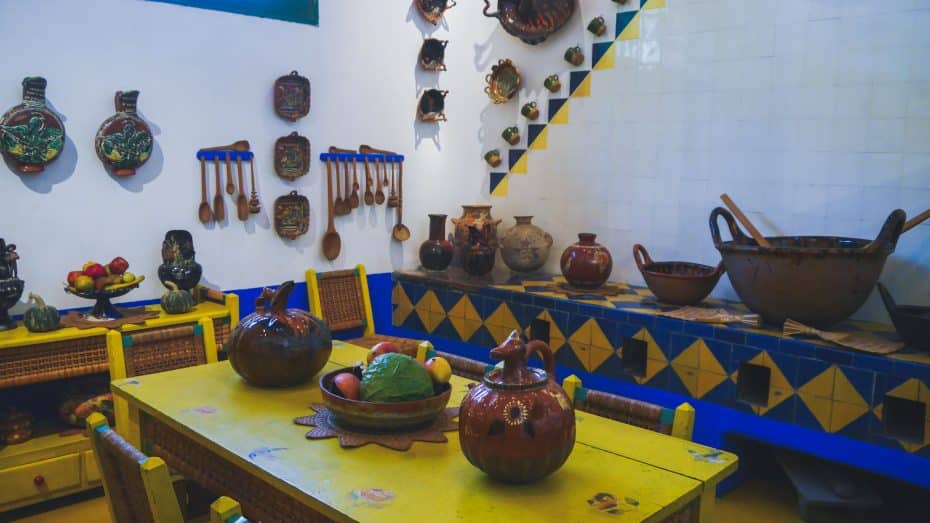
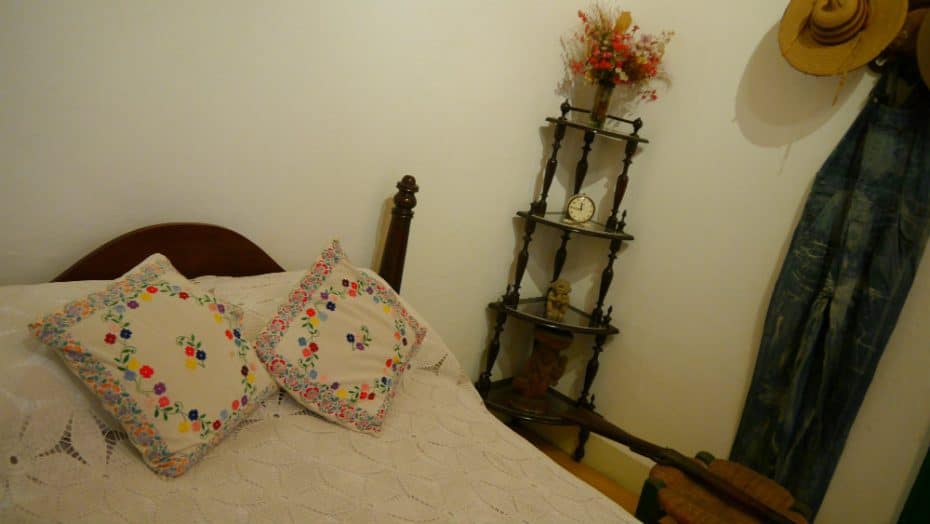
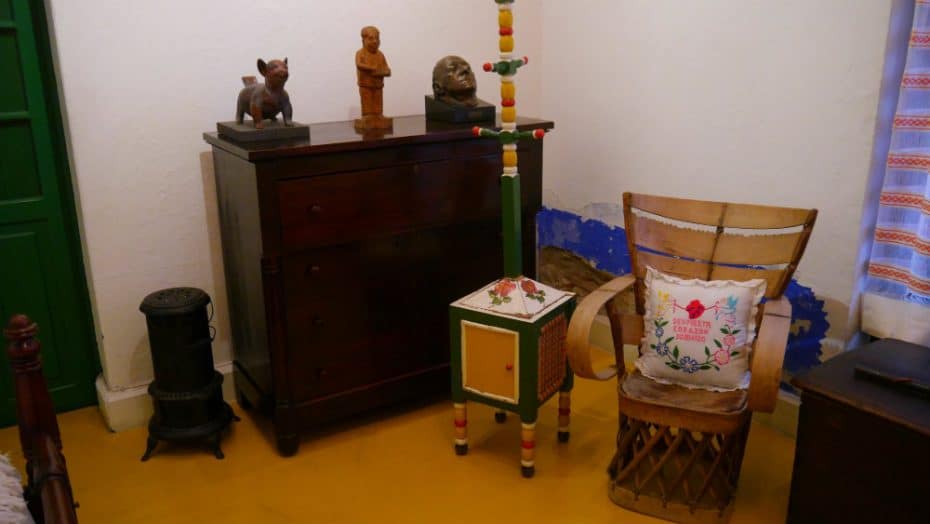
The house holds many of her personal items — from her brushes to the wheelchair she used while painting. The furniture inside is simple yet deeply personal, revealing the intimate side of Kahlo’s life beyond her famous artworks.
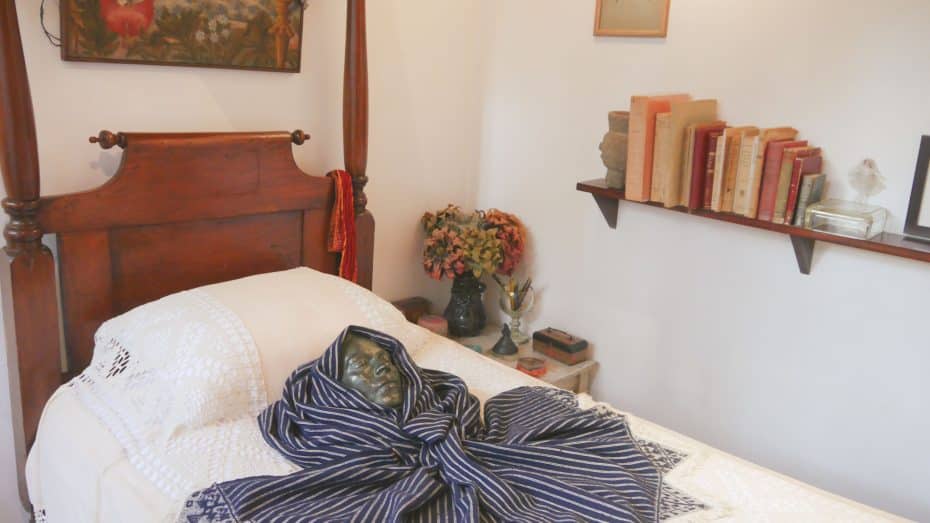
But perhaps the most poignant item is Kahlo’s actual presence in the house: her ashes rest inside a pre-Hispanic clay urn on an unassuming table at the house’s center. She’s surrounded by a Mesoamerican statuette in a prayer position and one of a sleeping xoloitzcuintle (a breed of dog native to Mexico).
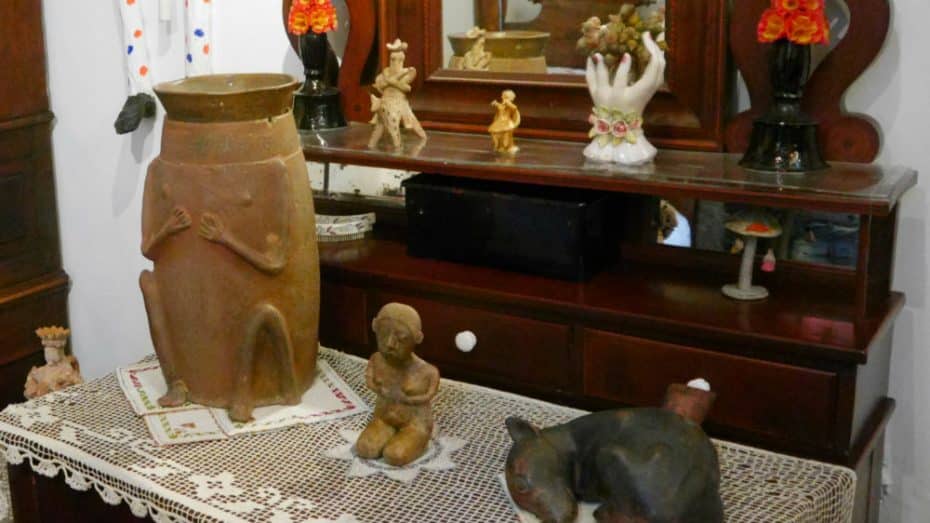
La Casa Azul: Practical Information for Visitors
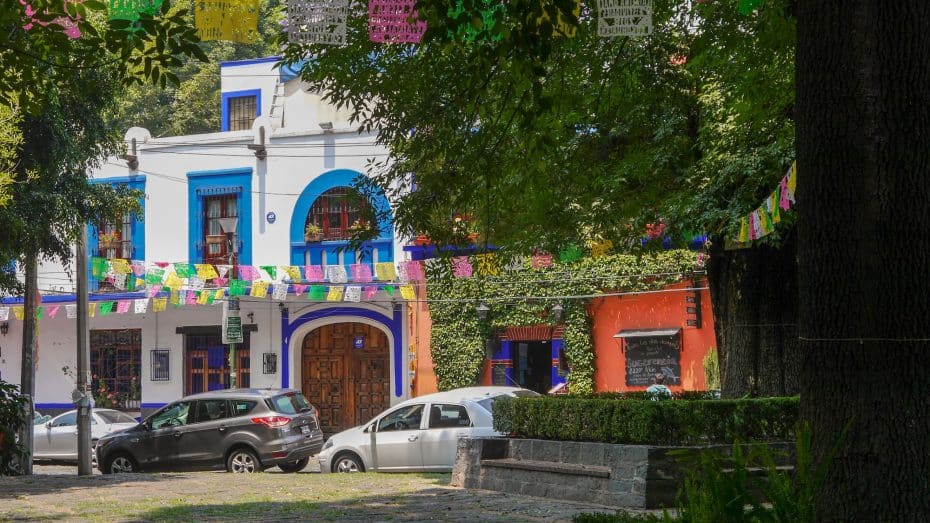
La Casa Azul, situated in the heart of Coyoacán, offers a glimpse into the life and work of Frida Kahlo. This museum, once Frida’s home, is filled with her artifacts, paintings, and carefully preserved spaces that breathe life into her legacy.
Planning a visit to the Frida Kahlo Museum? Here are some practical tips:
Tickets & Hours: It’s a good idea to book your tickets in advance online, as the museum has limited capacity and is quite popular. La Casa Azul is open from Tuesday to Sunday, typically from 10 a.m. to 5:30 p.m. You can book discounted tickets and skip the lines here.
Location: Located in the charming Coyoacán neighborhood, La Casa Azul is easily accessible by public transportation.
Getting There: From the city center, take Metro Line 3 to Coyoacán Station or catch one of the various bus routes that head towards Coyoacán. From the station, it’s a short walk to the museum. Travel time from central areas like Zócalo is about 15 to 20 minutes by Metro or around 30 minutes by bus.
Admission Fees: Tickets cost approximately $15 USD for general admission, with discounts available for students, teachers, and +65s. Make sure to check their official website for the latest pricing.
Guided Tours: Consider taking a guided tour to gain deeper insights into Frida’s world. Tours are available in Spanish and English.
Facilities: The museum includes a café for snacks and drinks and a gift shop filled with Frida-inspired souvenirs.
Crowd Tips: To avoid the crowds, visit on weekdays or early in the morning. Booking tickets in advance is smart, especially during weekends or holidays.
Accessibility: La Casa Azul is wheelchair accessible, but some areas might be challenging due to narrow doorways and steps.
Photography: Photography is allowed but without flash. Respectful behavior and preservation of the artifacts are highly encouraged.
Duration: Allocate around 1 to 2 hours for your visit to appreciate the museum fully.
Special Exhibits: Look for special exhibits and seasonal events. These can provide a unique perspective and additional context to Frida’s art and life.
Comfort: Wear comfortable shoes, as you’ll be on your feet exploring the different rooms and gardens.
Weather: The museum’s garden is a highlight, so consider visiting when the weather is pleasant to enjoy it fully.
Nearby Attractions: While in Coyoacán, explore nearby attractions such as the Coyoacán Market, the National Museum of Popular Culture, and the lovely Plaza Hidalgo.
Preparation: Read up on Frida Kahlo’s life and work before visiting to enrich your experience and deepen your understanding of what you see. A great book to start with is “Frida: A Biography of Frida Kahlo” by Hayden Herrera. If reading isn’t your thing, check out the 2002 biopic “Frida” starring Salma Hayek.



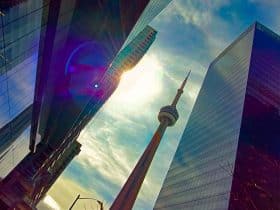
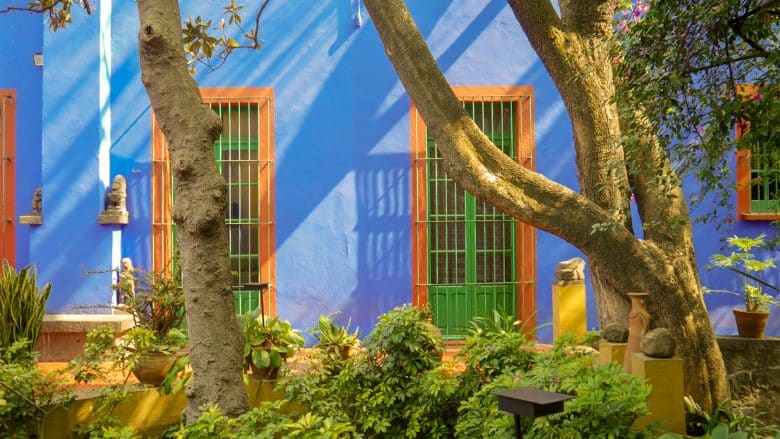



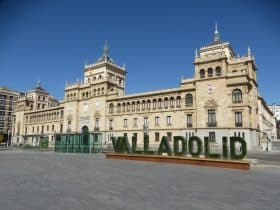
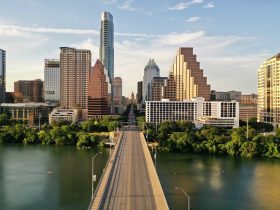
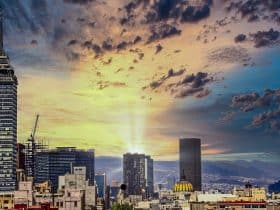

















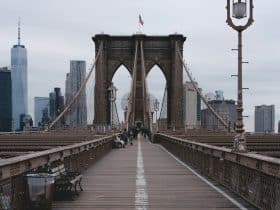
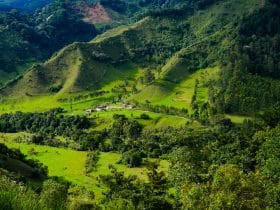
Leave a Reply
View Comments